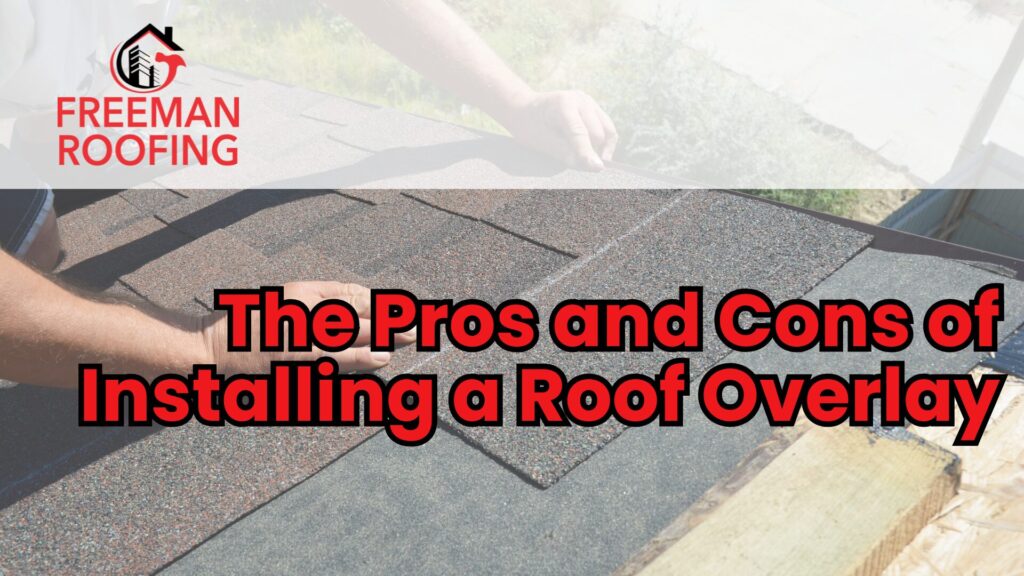The Pros and Cons of Installing a Roof Overlay

Roof Overlay 101: What’s the Deal?
A roof overlay, also known as a “layover” or “second layer,” involves installing new shingles directly over your existing roof. Think of it like putting on a new coat over your old one. It can be a faster and less expensive alternative to a complete roof replacement. But, like any home improvement project, it has its ups and downs. If you’re considering different roofing options, our guide on Choosing the Right Roofing Material might be helpful. You can also learn more about the basics of roof construction from this resource by The National Roofing Contractors Association (NRCA) (https://www.nrca.net/for-homeowners/choosing-a-professional/roofing-basics).
The Roof Overlay Perks (aka the Pros)
- Speedy Gonzales: One of the biggest advantages of a roof overlay is the speed of installation. It’s typically much faster than a full tear-off and replacement, meaning less disruption to your daily life.
- Money Saver (Maybe): In some cases, a roof overlay can be less expensive than a complete replacement. However, it’s crucial to get accurate estimates from reputable contractors to compare costs. Get a free roofing estimate from Freeman Roofing. We also have some helpful tips on budgeting for a roof replacement.
- Curb Appeal Boost: A new layer of shingles can instantly refresh your home’s exterior and improve its curb appeal, which is a big plus if you’re planning on selling. See how a new roof can transform a home in our before and after gallery. This article on Bob Vila (https://www.bobvila.com/articles/curb-appeal-projects/) also offers some great curb appeal tips.
The Roof Overlay Drawbacks (aka the Cons)
- Hiding Problems: Here’s the catch: a roof overlay doesn’t address any underlying issues with your existing roof. If you have rot, leaks, or structural problems, they’ll just be covered up, not fixed. It’s like putting a band-aid on a broken bone. Learn more about common roof problems. We also have a guide on how to identify roof leaks.
- Limited Lifespan: A roof overlay typically won’t last as long as a complete roof replacement. You’re essentially putting a new roof on top of an old one, so the underlying issues will eventually catch up.
- Added Weight: Adding another layer of shingles increases the weight on your roof structure. It’s essential to make sure your roof can handle the extra load. Consult with a structural engineer if you have concerns.
- Not Always an Option: Roof overlays aren’t suitable for all roofs. If you have more than one layer of existing shingles, or if your roof is in poor condition, a complete replacement is usually necessary.
- Potential for Future Problems: Because you’re not removing the old roof, it can be difficult to detect leaks or other problems in the future. This can lead to more costly repairs down the road.
Is a Roof Overlay Right for You?
The million-dollar question! A roof overlay might be a good option if your existing roof is in relatively good condition and you’re looking for a quick and affordable way to improve its appearance. However, if your roof has significant damage or you’re planning on staying in your home for a long time, a complete replacement is usually the better investment. This guide from Family Handyman (https://www.familyhandyman.com/roofing/roof-repair/when-to-replace-your-roof/) offers some helpful advice on when to replace your roof. You can also find more information on roof replacements from the GAF Learning Center (https://www.gaf.com/learning/roofing-101/roof-replacement-process). We also offer financing options for roof replacements.
The Bottom Line
Roof overlays can be a tempting solution for homeowners looking to give their roofs a facelift. But it’s crucial to weigh the pros and cons carefully and consult with a qualified roofing contractor to determine if it’s the right choice for your home. Don’t just focus on the short-term savings; think about the long-term health of your roof and your wallet! Contact Freeman Roofing for a free roof inspection and consultation.
